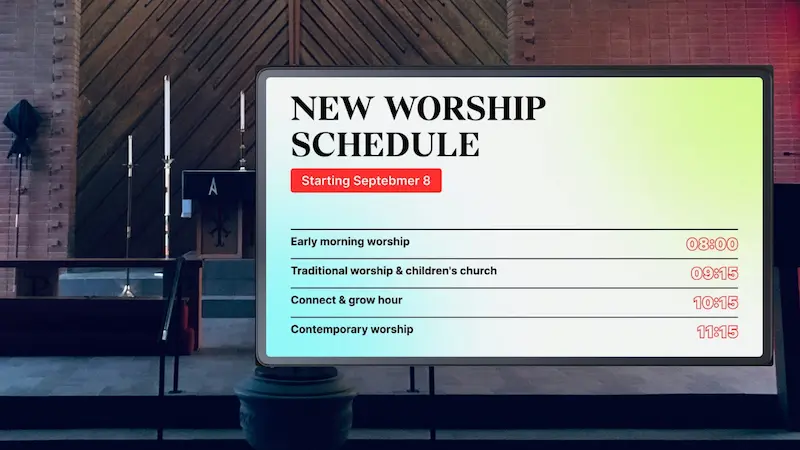
Table of Content
Creating an effective fitness marketing strategy requires showcasing more than just chiseled abs and toned muscles. You need to resonate with your audience's aspirations and build a community around wellness.
Fitness enthusiasts today aren’t just buying a gym membership or a yoga class; they’re investing in a lifestyle. Your marketing approach should be multi-dimensional, addressing physical health, mental well-being, and community belonging.
This guide explores the top cornerstones of a fitness marketing strategy that engages, motivates, and turns your clients into advocates of your brand.
Embrace the Fitness Landscape in the Digital Age
Fitness brands are increasingly using data analytics to enhance customer satisfaction through customized workout plans, nutritional advice, and personalized communication.
There’s a surge in the use of VR and AR technologies to engage users with interactive and gamified workout sessions to broaden the appeal of fitness.
Social media plays a huge role in creating fitness communities that strengthen brand loyalty and create a supportive network for individuals seeking motivation and advice.
Fitness brands collaborate continuously with influencers for authentic marketing to increase brand visibility and credibility.
There is a growing focus on sustainable practices and ethical standards in fitness marketing to attract eco-conscious consumers.
Blueprinting a Holistic Fitness Marketing Strategy
Craft a Vision for Success in the Digital Era
Fitness marketing today is a mix of technology, authenticity, and community. Fitness enthusiasts are craving real stories, relatable journeys, and genuine interactions, and that’s where your brand can truly connect and make a mark.
17% of gym-goers say they consider a sense of community the most important aspect of their fitness journey (Statista). Successful fitness businesses are using authentic messaging to nurture a strong online fitness community where their brand is a platform for clients to share, learn, and grow.
With wearable technology as the top fitness trend in 2024, members expect tailored offerings at every touchpoint. Big data is providing gyms with insights to develop personalized fitness regimes by understanding each individual's unique needs, aspirations, and physical conditions.
Key Principles for a Results-Driven Plan
- Make use of your online community to cultivate brand awareness across social media platforms to reach a broader audience and maintain constant engagement.
- Create a well-designed website where potential and existing customers can find information about your business.
- Use digital signage to create an omnichannel experience that closes the gap between online and in-person interactions.
- Implement online referral programs with appealing incentives to encourage members to bring in new clients.
- Stand out by offering distinctive classes or services to attract a broader clientele.
Digital Signage for Gyms
Captivate with Dynamic Displays
To succeed in the digital era, you need a hybrid marketing approach that blends online and in-person visits. Digital signage in the gym is a solution that will make the gym-going experience simply revolutionary for your members, from welcoming clients with digital reception signage to showcasing important information, class schedules, and operating hours.

Digital displays also feature touchscreen technology, which will modernize the feel of your gym environment and streamline check-in processes.
Visual Inspirations for Fitness Enthusiasts
Building brand awareness is important, and you can achieve it by incorporating your gym's logo, color scheme, and imagery across your signage network to nurture brand recognition and loyalty among members.
These screens will inspire fitness members by showcasing success stories, tips, and nutritional advice in visually appealing formats. In addition, you can include real-life transformations and achievements to enhance the credibility of your gym and demonstrate its commitment to member fitness goals.
Creating Motivational Narratives
Part of your social media strategy would be integrating social media feeds on your digital displays for members to connect and share their fitness journeys. On top of that, you can promote events and special deals and incorporate gamification elements like fitness challenges that will further engage and motivate your members.

Personalization Strategies for Gym Success
Tailoring Approaches to Members
Consumers prefer to be treated as individuals. Personalization is your golden ticket to customer loyalty and retention. Technology has brought advancements in data analytics and wearable technology with which you can offer more customized workout and nutrition plans that align closely with individual goals and preferences.
Forge Lasting Bonds with Your Fitness Community
A strong fitness community is a powerful marketing tool. It creates a sense of belonging among members that translates to high retention rates. Satisfied members will share their positive experiences with friends and family, and your business thrives on word-of-mouth referrals.
So make sure you actively engage with your online community by acknowledging their achievements and showing genuine interest in their fitness journeys. Continuously keep them updated on new classes and fitness and nutrition tips.
Social Media Dynamics
Cultivate Communities on Digital Platforms
Your target audience will likely search for your services online. So, before anything else, identify what makes your business unique, then tailor your value proposition to align with specific digital platforms.
Twitter is great for sharing quick fitness tips and industry insights, YouTube for longer, informative content like workout routines or myth-busting videos, and Pinterest for driving traffic to your blog or website if you're focusing on content creation.
Dive into Social Media Engagement Tactics
Key tactics that will elevate your social media marketing strategy include:
- Optimize your social media profiles with a compelling bio, strategic emojis, professional photos, and a link to a lead capture page.
- Use themed posting days like "Motivational Monday" to organize content and establish a predictable content rhythm.
- Collaborate with influencers who align with your brand's values for authentic promotion and extended reach.
- Regularly share client success stories and testimonials especially through videos and before-and-after photos, to provide social proof and demonstrate your services' impact.
Optimizing Fitness Websites

Design an Irresistible Online Presence
Your website is the most important foundational piece of your fitness business. Once you get it right, it will pave the way to attract new customers. Start by defining the core purpose of your website; it will dictate your design and content strategy.
96.55% of businesses don’t get found on Google. Why? They’re not optimized for findability. You therefore need to implement fitness-related SEO to improve your visibility in search engine rankings.
- Create expert-driven, high-quality content that offers fresh perspectives and unique data.
- Acquire backlinks from reputable and relevant websites. Avoid buying links, and instead focus on creating content that naturally encourages others to link to your site.
- Make sure your content fulfills what users are looking for, whether it’s information, products, or services.
- Your website should be responsive and easy to navigate on mobile devices.
- Focus on click-through, bounce, and dwell time metrics to enhance the user’s on-page experience.
Enhance User Experience
Your website should provide a fluid, intuitive user experience, clearly highlight services offered, include customer testimonials, and be easily navigable for booking appointments or subscriptions. Use customer service chatbots to offer immediate assistance and answer common queries.
Fitness Growth Through Data Analytics
Strategic Insights for Targeted Initiatives
- Adapt marketing strategies based on individual preferences. For instance, the way you’ll target spinning class enthusiasts should be different from weekend gym-goers.
- Increase offerings such as HIIT classes during peak times as data trends indicate.
- Act promptly on customer feedback regarding new classes or equipment requests.
- Use past data to anticipate and prepare for seasonal trends, such as a January surge in gym memberships.
Analytics for Fitness Business Expansion
- Make use of online data to enhance and expand digital offerings, like virtual classes or fitness apps.
- Use demographic and market trend data for strategic location planning of new fitness centers.
- Form strategic partnerships with brands or businesses sharing similar customer bases.
- Introduce new products or services based on equipment and class usage data insights.
Conclusion
Trends in fitness marketing are pointing towards fitness as an experience. Providing space and equipment for working out isn’t cutting it anymore. We’re talking holistic fitness, sustainability, luxury wellness experiences, and technology for personalization.
To give you a starting point, go the technology route by installing digital signage screens in your facility to create a trendy and modern feel that your members will look forward to. Try our Look Digital Signage platform today and transform how your clients experience their fitness journey.






.webp)

